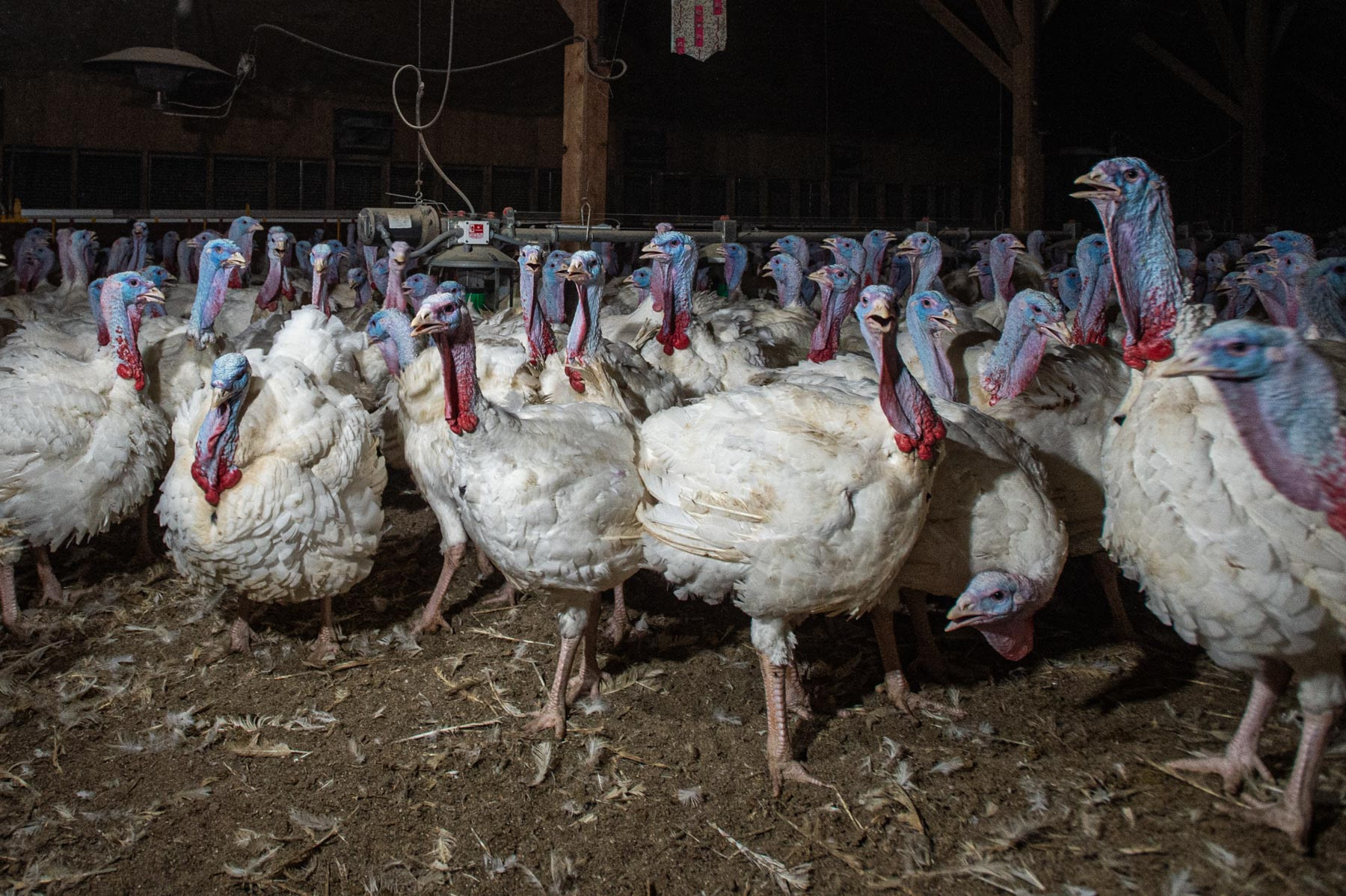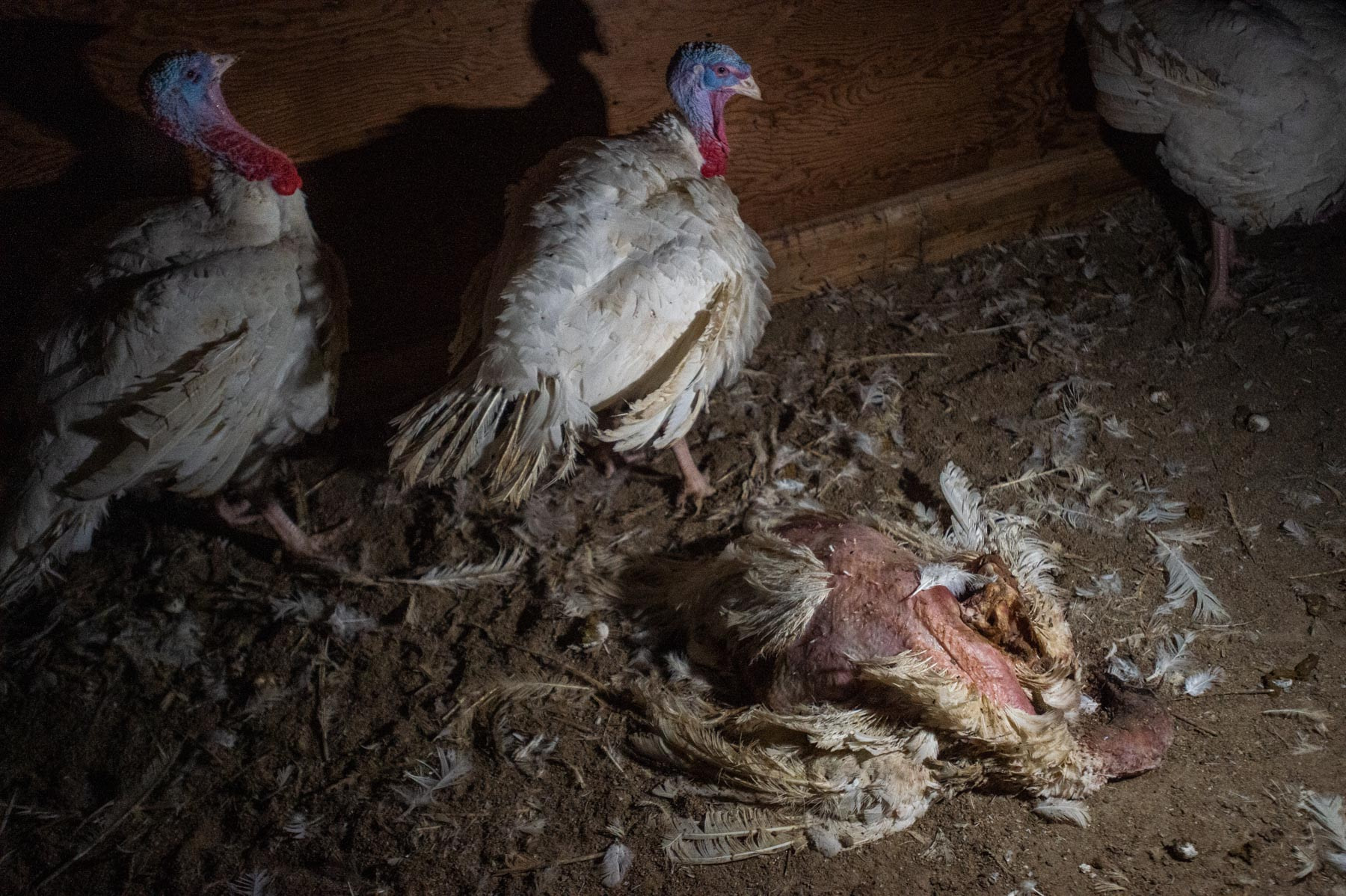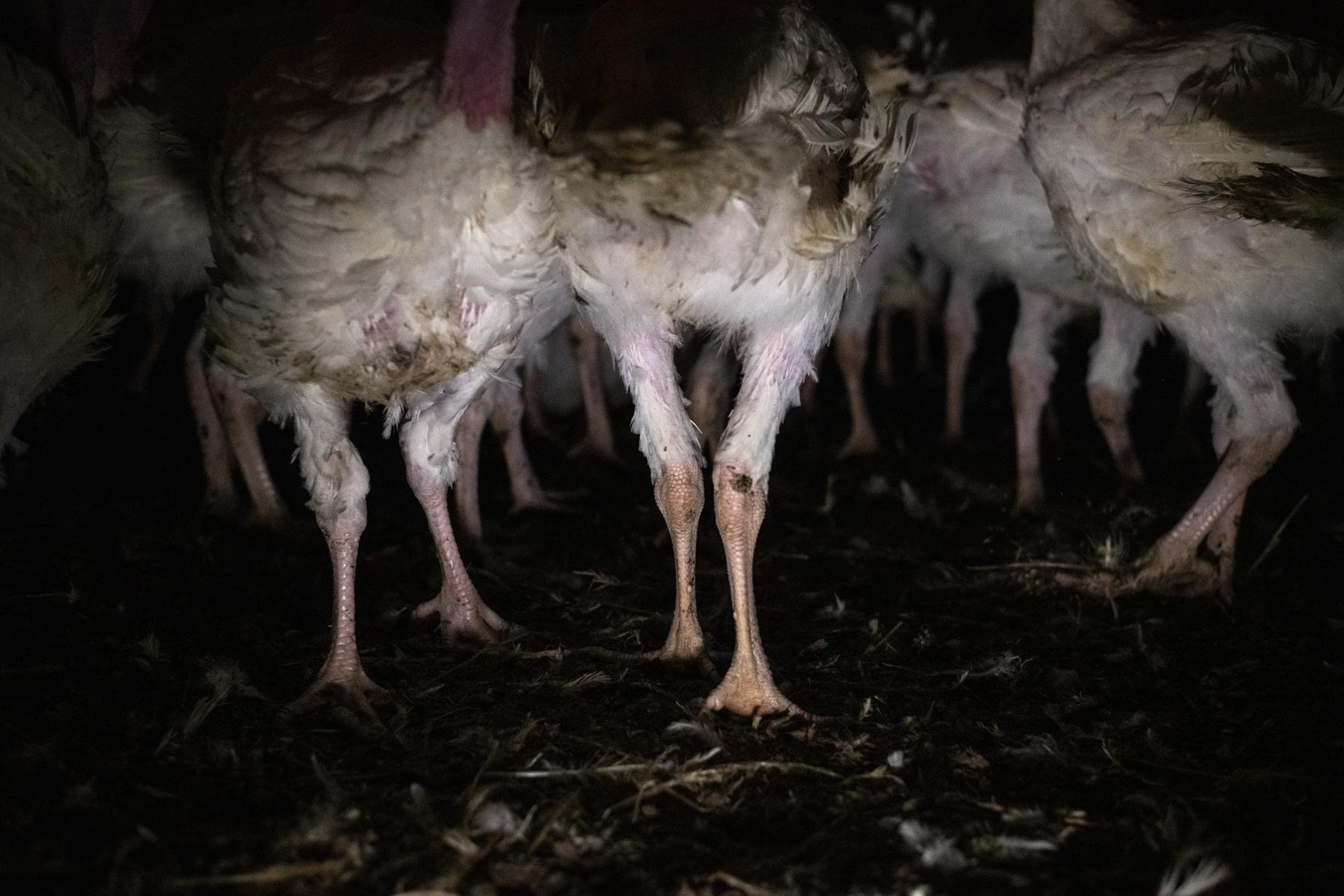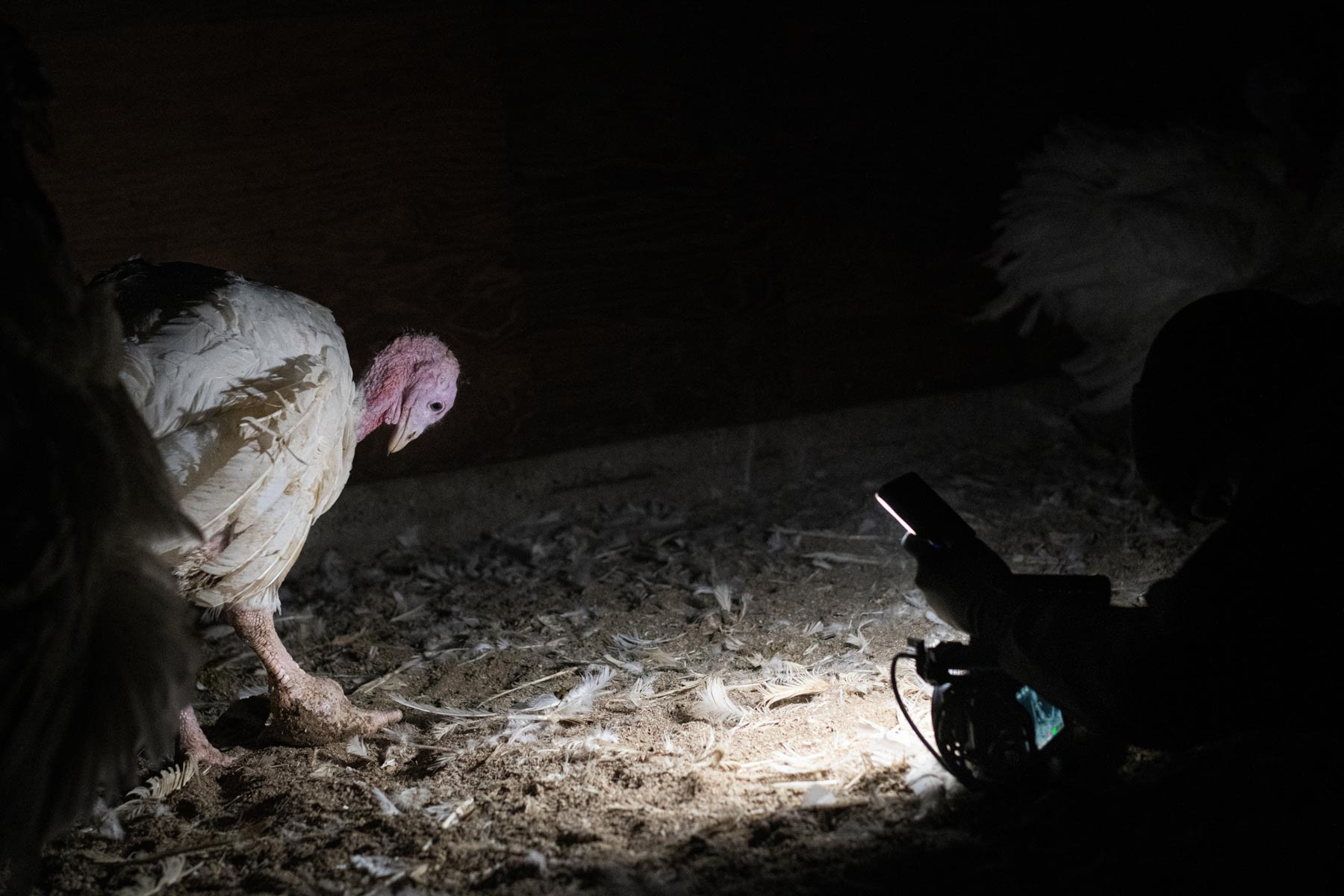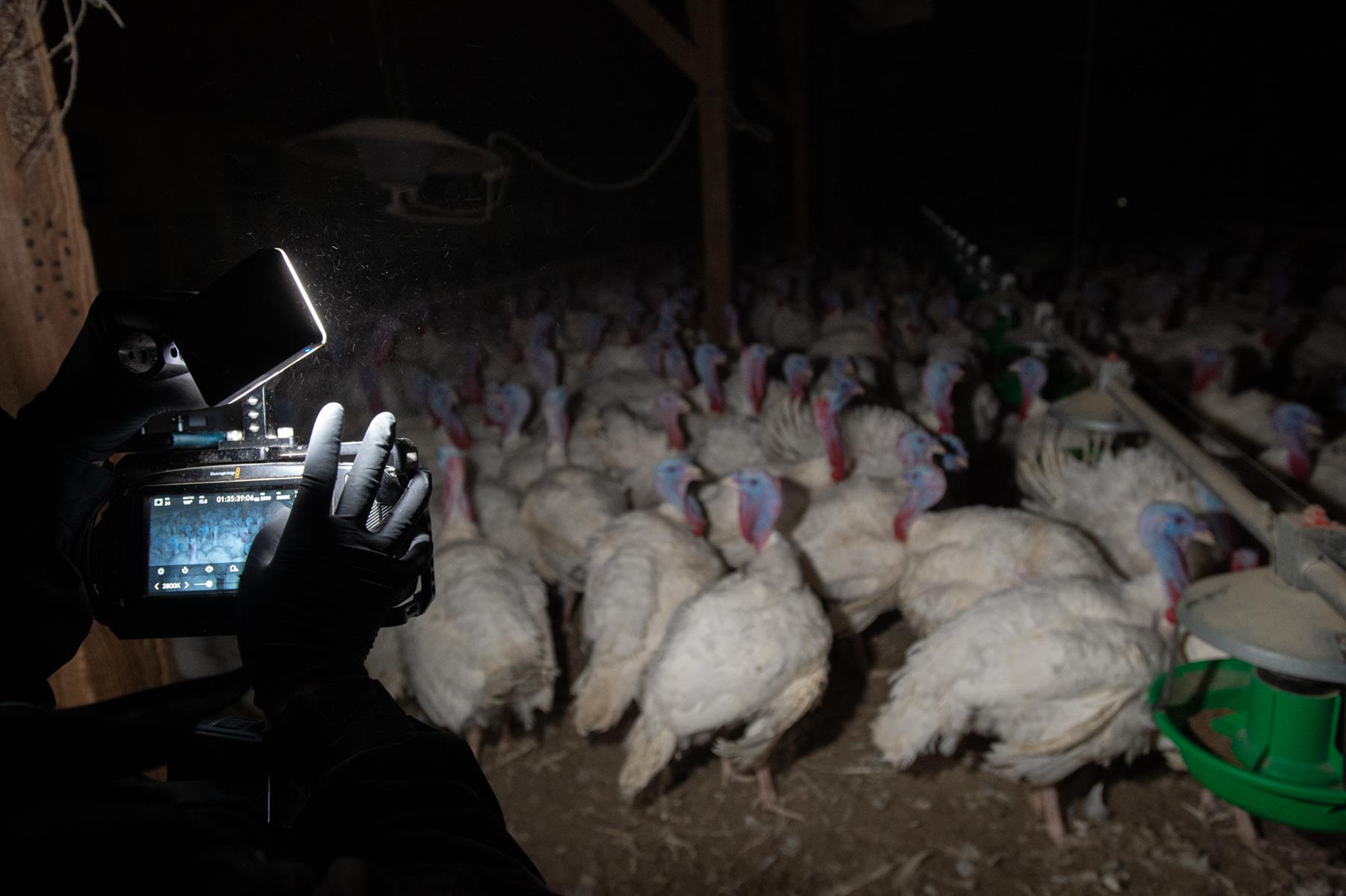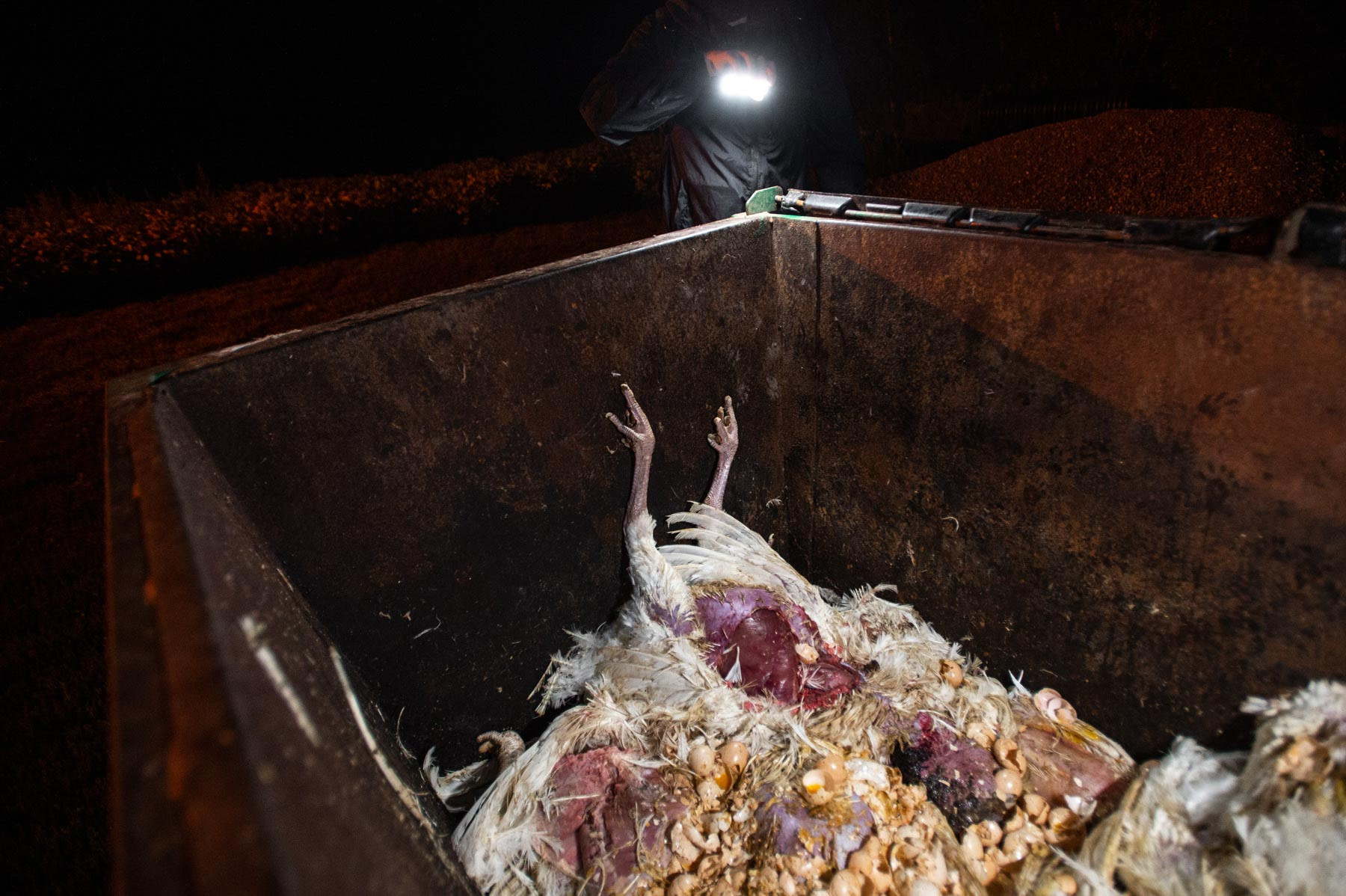Thousands of turkeys inside a factory farm. The heat causes them to pant. Canada, 2020.
Jo-Anne McArthur / We Animals
A few weeks ago I visited one of Canada’s 523 regulated turkey farms. Despite the current global pandemic, I’m staying carefully mobile in my own country with investigative work.
In 2019, Canadians ate 6.3 million whole turkeys. We also know that Canadians waste an astounding 40% of our food. In 2019, U.S. consumption of turkey was 5.3 billion pounds. And this number floors me: 656,309,000 turkeys were slaughtered worldwide in 2018.
Photographer: Jo-Anne McArthur
One of many turkey carcasses on the floor of a factory farm. Canada, 2020.
Jo-Anne McArthur / We Animals
I’ve met rescued turkeys and I absolutely revel in their curious and funny natures. They come running to you for company. They like to talk at you – a lot. If only we knew precisely what they were saying! We do know they have easily distinctive and understood calls: the gobble, the spit and drum, the cackle, the warning yelp, the purr. My favourite interactions with turkeys are when they let me stroke the feathers on their abdomen and under their wings. They love it, and start to preen themselves with pleasure.
You’ll see how dusty and unclean these warehouses are in the photographs. I can’t bring myself to call them farms. They are industrial machines. Production facilities. You’ll see the deaths, cramped confinement and injuries. What you can’t see is the heat. Poor ventilation in these warehouses leads to the birds panting and drooling.
It’s a nightmarish way to exist for any living being.
A turkey suffers from bumblefoot, also known as plantar pododermatitis, a common disorder of maturing males of the heavy breeds of turkeys. Canada, 2020.
Jo-Anne McArthur / We Animals
I face these animals, and think about how we expect them to surrender their very lives so that we can give thanks around a table. I also think about how we scrape our uneaten food into the bin, and wonder how much turkey will end up as the 40%.
Thanksgiving is just around the corner.
Simply, I would like to make a proposal: Will you give thanks this year without the killing?












Data Sources: Turkey Farmers of Canada, National Turkey Federation, Farm Sanctuary
Photographer: Jo-Anne McArthur

